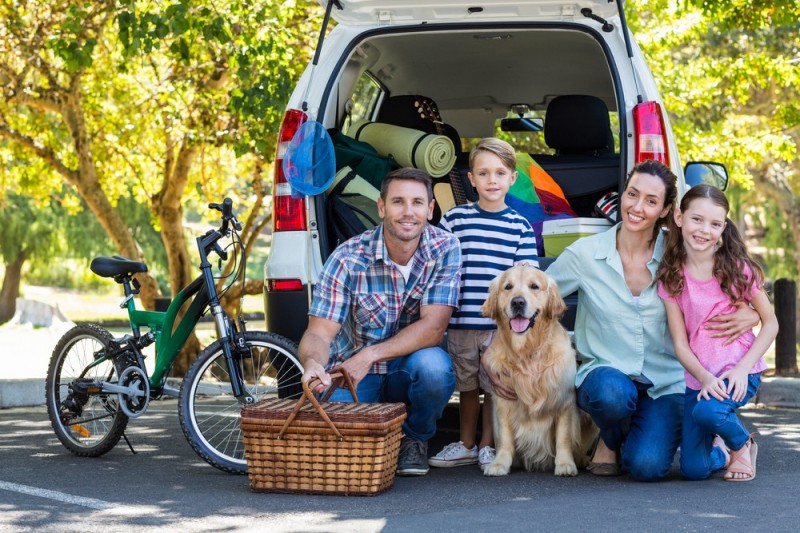How to Properly Tie Down Cargo

Summer vacation is here already, and the time to strap things to the top of your car is right around the corner. If you surf, own a canoe, or even if you’re moving and need to transport furniture, there is indeed a correct way to properly secure it all to your car.
Winging it—or just haphazardly hanging it halfway out of your trunk—is never a good idea. Between 2011 and 2014, more than 200,000 crashes happened due to debris on U.S. roads. And at Gabe's Collision North, we definitely see our share of accident damage due to collisions with road debris.
Don’t turn your surfboard into a flying torpedo—tie it down properly by following these guidelines!
- Use the Right Materials
When it comes to securing anything to your car’s roof, the materials you use are a big part of the puzzle. To get the task done, use tie-down straps, ratchet straps, or even simple heavy-duty rope. Do not use bungee cords or shock cords to tie down your cargo—they are far less reliable than tie-down straps, and they pose several other safety risks as well.
- What Will Your Cargo Be Strapped TO?
Whether or not your car has a rack or side rails on its roof matters. When attaching things to your roof, side rails and crossbars are definitely ideal, but not absolutely necessary. If there isn’t anything on your car’s roof at all, run the tie-downs through your car’s open windows, and attach their hooks together inside of the car.
In the case of using rope, make sure you know how to tie a good knot; Lifehacker has a great video showing you how to tie anything to your car using a rope and a trucker’s hitch.
- Place the Cargo on Your Car
When loading your stuff onto the top of your car, placement matters. Make sure you evenly distribute the items across your roof or roof rack and center them in between the car doors. The Art of Manliness blog recommends placing heavier items on top of lighter items to help hold them down. This ensures that the bulk of the item is properly secured.
If you do have side rails, make sure that the front of your cargo is placed in line with the beginning of the roof, or at least placed as far back as possible. Letting your item hang over the front of the windshield will cause it to catch more wind, and in turn will cause an updraft force on the car. When carrying something long like a tree or kayak, you can’t really avoid overhang. In these cases, make sure that you anchor the object to the front and back of the vehicle. Make sure you don’t hook it to your bumper, though—hook it to your vehicle’s frame or roof rack.
- Drive Carefully & Stay Aware
Once you get going, make sure that you maintain a manageable speed—having objects on the top of your car affects its aerodynamics and creates a higher center of gravity, making it more difficult and potentially dangerous to drive. Also, if you’re going to be making a longer trek, be prepared to stop occasionally and check on your load. Even if you stress-test the cargo by pushing it around a bit before you take off, it can shift under real-world driving stress—be safe, and just stop to check.
Gabe's Collision North wishes you a cargo-safe summer!
Like this content? Let us know! We work hard to provide relevant information to automotive consumers in the Buffalo, NY area.
















Social